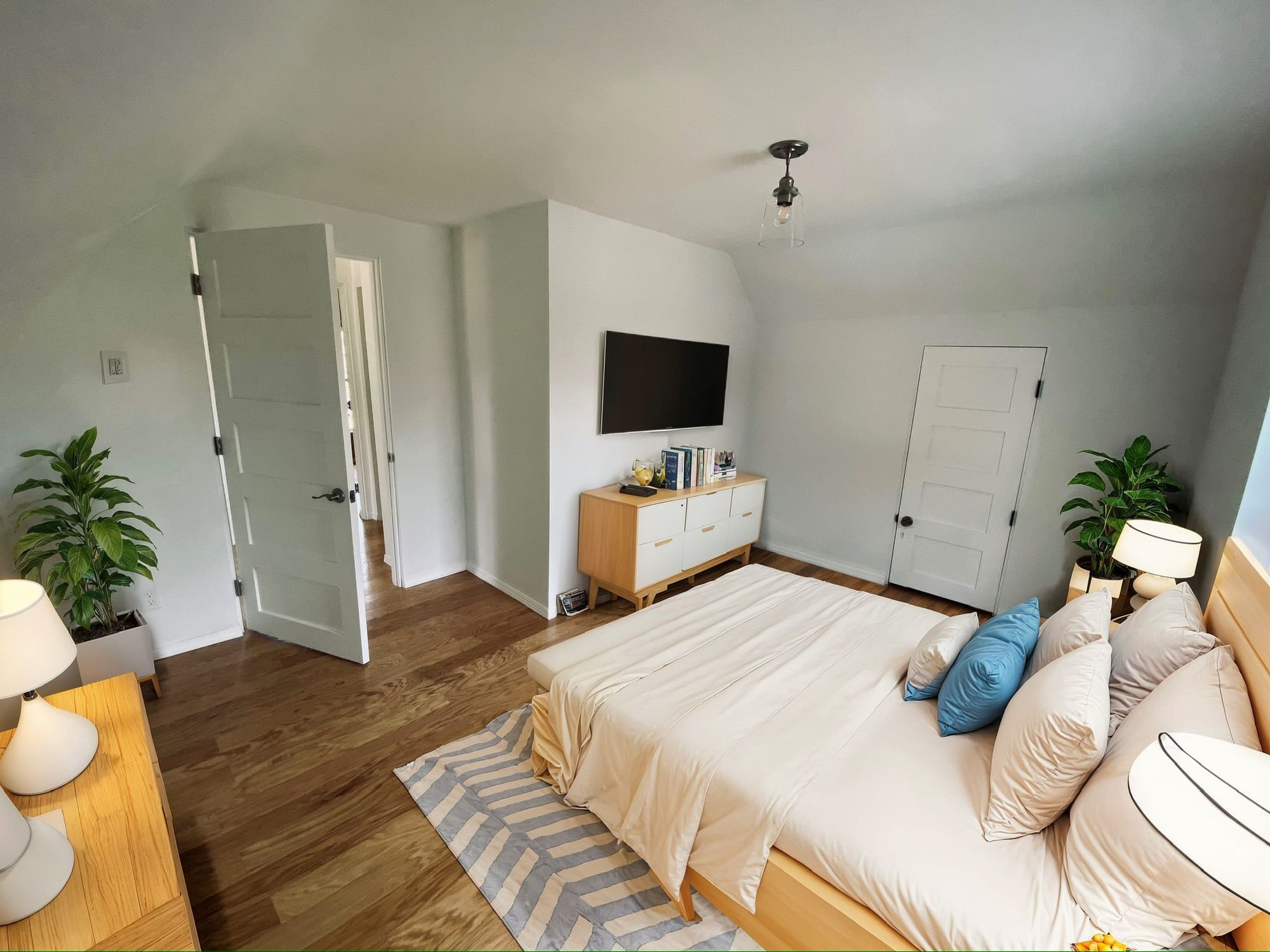Veronika was born in Russia, where her passion for music blossomed. After studying at the Gnesin’s College in Moscow, where she met her husband, she ventured to Italy and then to the Netherlands to pursue classical music education at prestigious institutions.
This journey took her to the grand stage of the Bolshoi Theatre, but she always felt a calling to understand the deeper connections between music and psychology. Settling with her husband in Minnesota and building a family, Veronika is now working as a vocal coach, helping students explore their musical potential. Besides, she is in the process of launching her own music studio. She is sharing with us her story of a fixer-upper project in St. Cloud, a college town in Minnesota.
What is a Fixer-Upper Project?
We bought this house in June 2020. By that time, we had already been living in the United States for three years in Plymouth, MN and we had managed to save enough money to purchase the house: most fixer-upper projects are typically sold for cash, as I know. Initially, we didn’t have a clear plan on whether we would live there or rent it out, but we decided to invest the money because I really wanted to do something with my own hands while also increasing the house value.
Let me explain the concept of a fixer-upper project: you buy a house at a low price, make repairs in a short period, but these are no major renovations – just slight repairs to make the house livable, in a decent condition. We didn’t initially have a business model – we were looking for a good opportunity to invest. Considering our budget, we needed to look for something in the surrounding areas. We wanted to complete this project and either rent it out or sell it. Currently, we have decided to sell the house, and it is on the market.
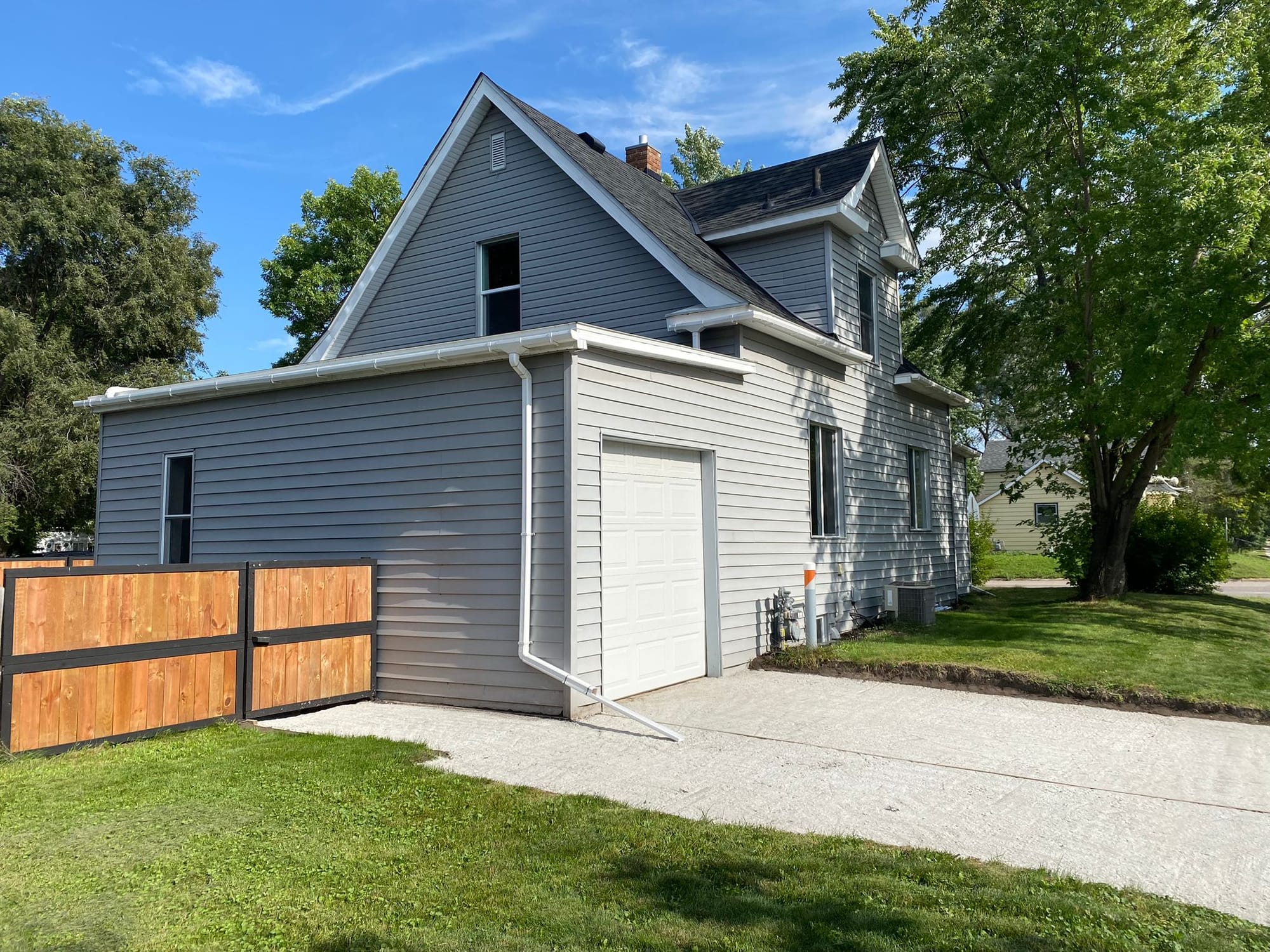
Along the way, I generally understood that in the States, fixer-upper projects are often handled by a couple where one is a real estate agent and the other one is a handyman. The handyman is usually the husband, who does the repairs, or it’s the family doing the work, changing and remodeling the house and legalizing all the changes, with the necessary permits to make the fixes legally. The wife often manages the renting or selling to avoid extra fees. But me and my husband didn’t enter this fixer-upper project as a business, but rather as an additional way to earn money and strengthen our financial position in the United States.
Choosing the Property
I’ve selected this property based on five main factors. First, we were limited to the state of Minnesota, as that’s where we live. Second, we wanted the property to be within 60 miles of where we live in Plymouth, which is about an hour’s drive. Third, we had a budget of around $60,000 in cash, as that’s all we had at the time, and most homes in our area were priced much higher. Eventually, we found a property in St. Cloud for $50,000, which worked out to $52,000 with closing fees. I’d like to mention that nowadays, that would be closer to $70,000. Fourth, the condition of the house was important – whether the major systems like plumbing and electricity worked, and whether the house was livable and had no major structural issues. Finally, we considered the design layout and whether it would be suitable for renting out or living in, and what changes could be made to improve it.
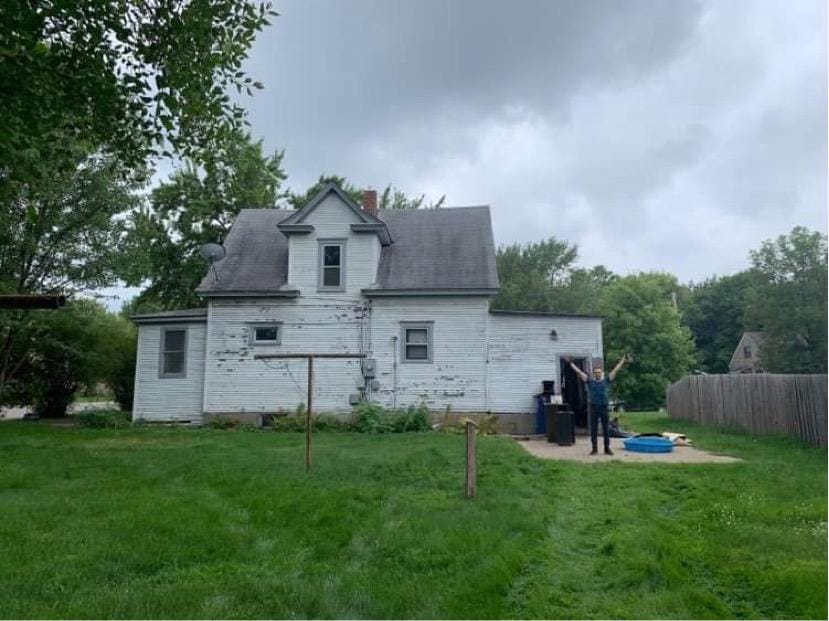
To be honest, it took me about a year to find the right property. I worked with multiple agents because not all of them were willing to drive 60 miles for showings, and I wasn’t offering big commissions. In Minnesota, the buyer typically doesn’t pay the fees – the seller does. The seller, in our case, also wasn’t willing to cover those fees. So, it was difficult to find an agent for this type of property because agents typically work on commission from the sale price, and no one was interested in driving all around Minnesota to show homes in the $50,000 price range. Therefore, finding a real estate agent was quite challenging, and I would recommend looking for additional sites, perhaps for internal investors, or searching for properties yourself and then contacting an agent for showings on sites like Zillow.com or Realtor.com.
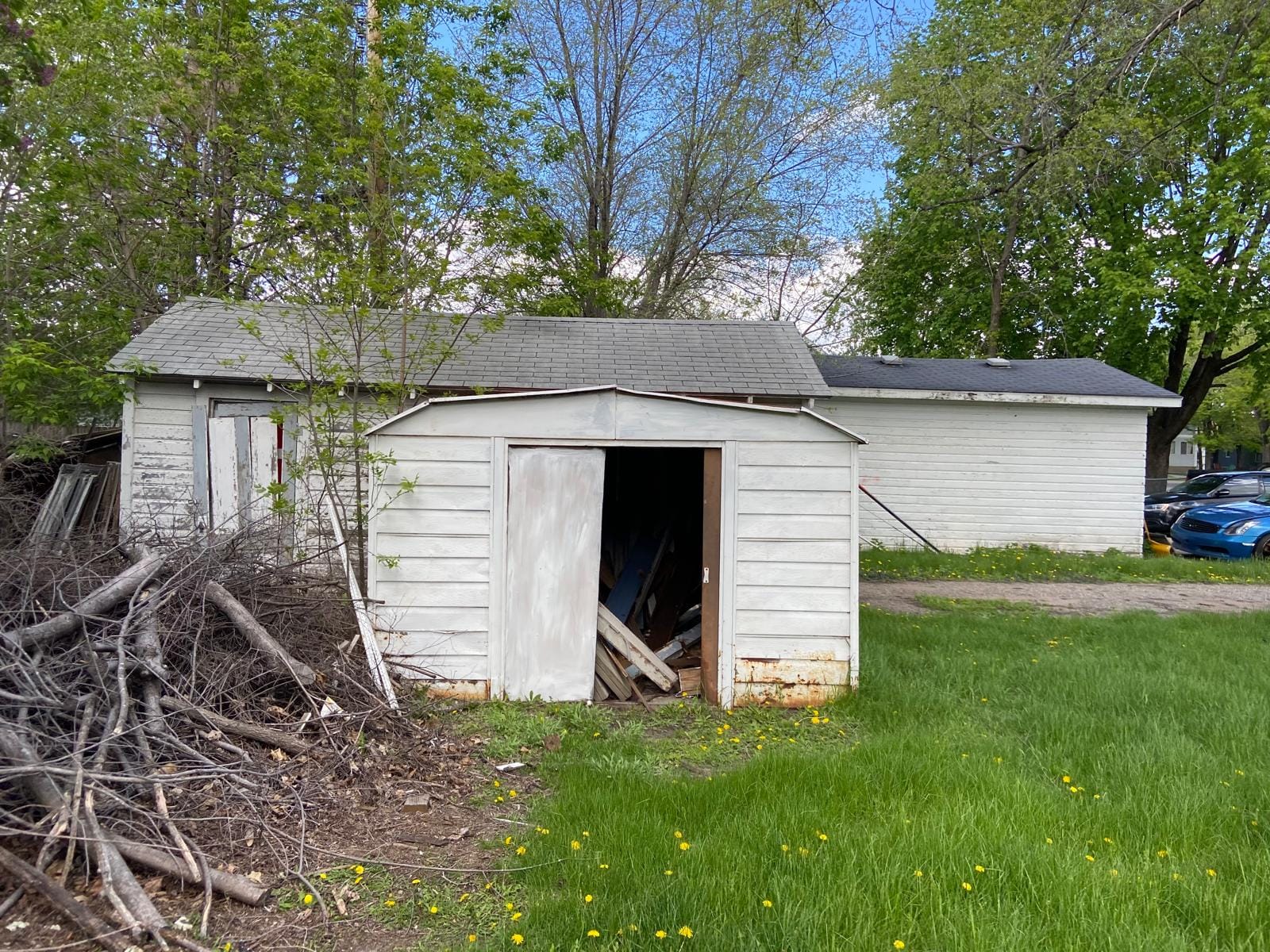
I found this property through an investor website. The house had been bought for $35,000 by a woman in the house-flipping business and was listed for $50,000. What made this property stand out was its location in a student town: just five minutes from the campus, no major structural issues, and the main systems were functional.
A Story Behind the House
The house was built in 1912 and is located a five-minute walk from St. Cloud State University. It has one and a half stories, typical for the time period. Originally, the house was 858 square feet with an unfinished basement. About 50 years later, an attached garage was added, in addition to a detached garage located at the very end of the lot. The property has two driveways from two streets since it’s on a corner lot. The lot itself is spacious, offering room for a playground, a small campfire, or even a small workshop. The house has one bathroom on the second floor; there is no bathroom on the first floor, which made the renovation challenging. The second floor has two small bedrooms, and the first floor includes a living room, a kitchen, a dining room, and a sunroom.
Key Regulations for Fixer-Upper Projects in Minnesota
Here are the key regulations to consider when buying a fixer-upper project in Minnesota:
1. Property Inspection: Ensure that a licensed inspector has checked the property, and the seller has provided a disclosure of defects.
2. Zoning: Verify that the zoning of the property allows the planned work or changes.
3. Permits: Obtain the necessary permits for renovations, especially if electrical, plumbing, or structural changes are planned.
4. Building Codes: Make sure the work complies with local building codes and safety standards.
5. Taxes: Check for any unpaid property taxes or fees.
6. Environmental Hazards: Be aware of potential lead paint or asbestos if the house is old.
7. HOA Rules: If applicable, review any restrictions imposed by the homeowners’ association on renovations.
I paid just under $2,000 for closing costs, including title search and title insurance, recording fees and transfer fees. I didn’t order an inspection and didn’t have any loans, so I didn’t pay any other fees. For those considering a similar project in the current market in Minnesota, specifically in the city of St. Cloud, I would suggest budgeting around $100,000 + $30K for renovations, in order to make around $100K after the sale.
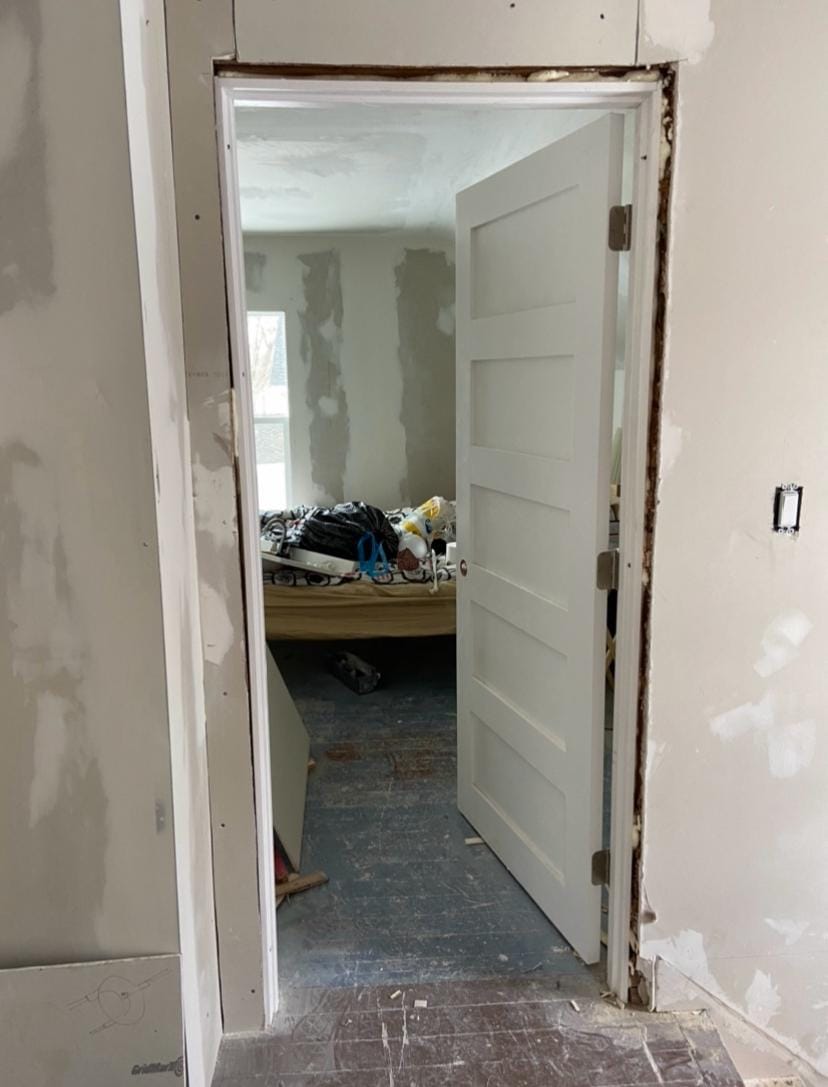
Remodeling the House
I’ve always been interested in various remodeling projects, and I used to watch different shows about transforming spaces, so design has always been one of my interests. When we bought this house, I couldn’t wait to start choosing floors, paint colors, furniture, kitchen cabinets, and so on. I’ve always been more interested in design than in major structural changes like replacing walls, doors, windows, the roof, or landscaping. This motivated me to take on the project because I saw it as a creative process. I’ve also always loved making improvements and changing things for the better, and this was a great way to channel our energy into transforming something, turning it into something beautiful. Our family had never been involved in such projects before – but my dad helped us a lot with the repairs, like plumbing, electrical work, and window replacements.
In our case, luckily, there were no structural issues. However, I would advise that before buying, you either hire an inspection service or, if you have a reasonably knowledgeable handyman, inspect the house for these issues, especially structural ones.
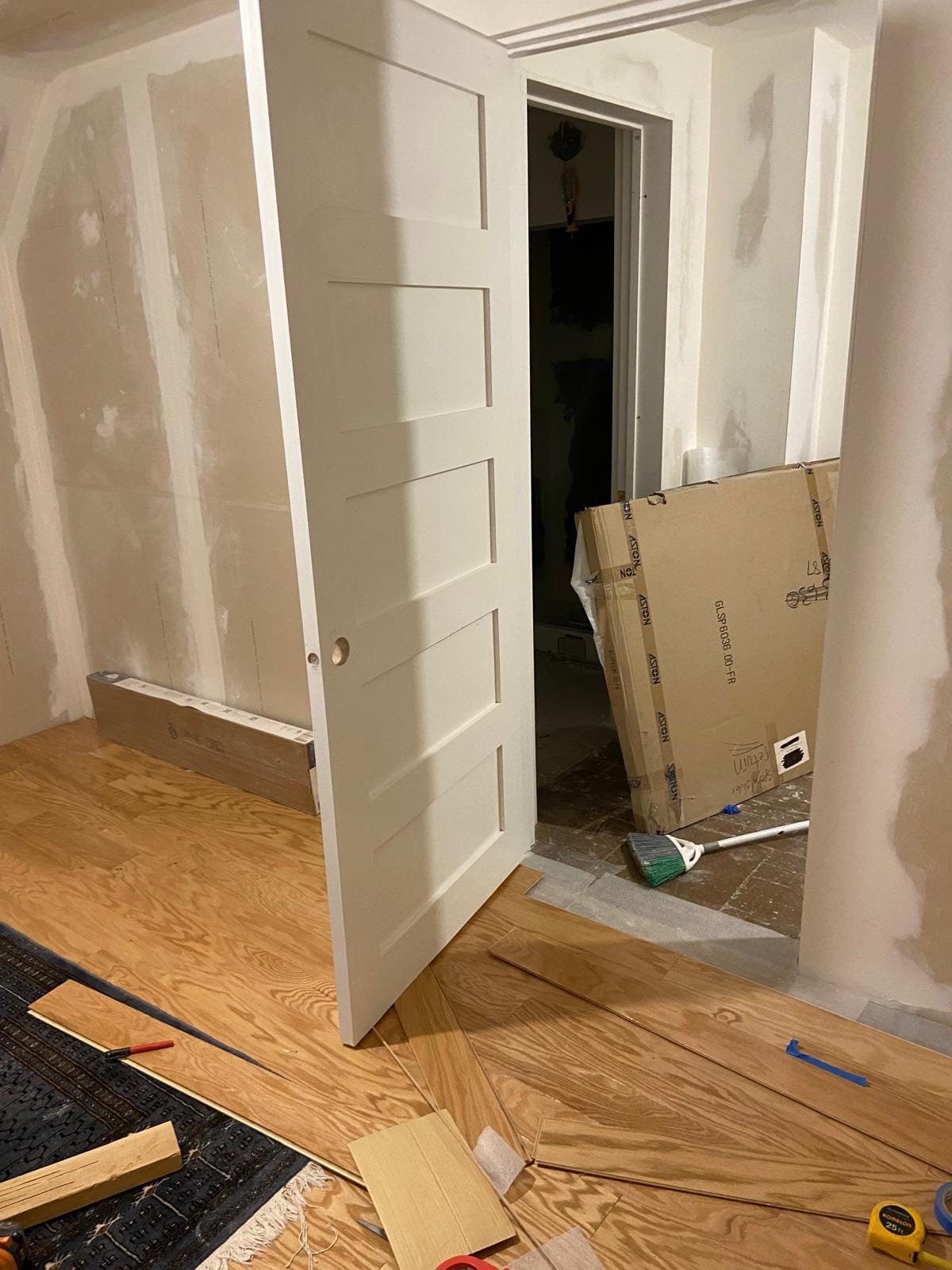
Here’s what we did. First of all, we replaced the siding. We needed to replace the roof, but that was very expensive – it was about $14,000. We purchased home insurance, and we were very fortunate that there was a hailstorm this year. Because of the hailstorm, the insurance completely restored our roof. The replacement service initially cost $14,000, but we only had to pay about $1,500 – the price of one year of home insurance.
The next phase was redoing the drywall walls throughout the house and applying plaster. This took a very long time. After that, we installed new flooring, painted the walls, and updated the plumbing, since the main systems, such as the heating and cooling systems, were in good condition. We only needed to modify the sewer pipes a bit, and that was all.
The exterior changes to the house – specifically the siding and roof – took just over a month. Everything else, the interior remodeling, took us about 7-8 months, considering that we only worked on weekends.
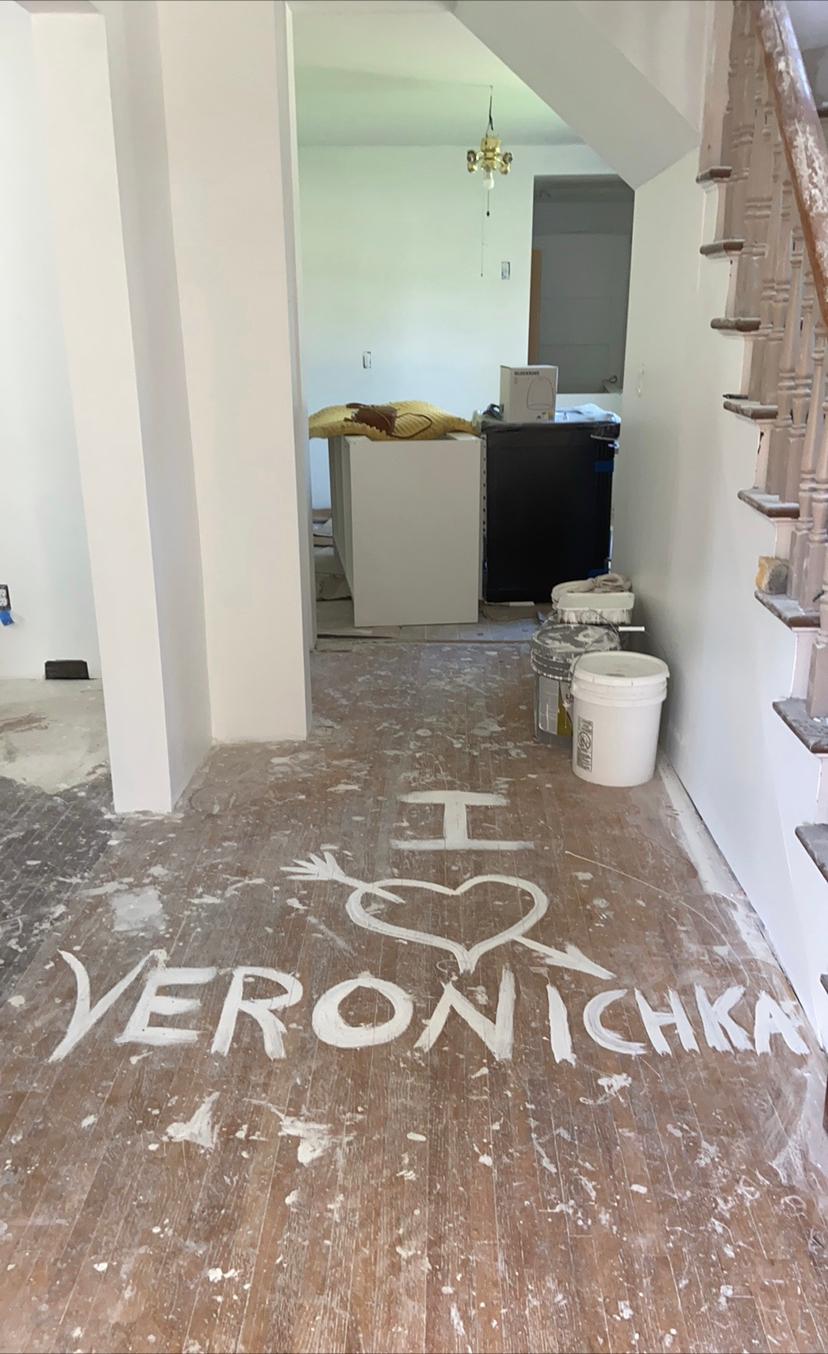
We didn’t do any major overhauls; we only added a bathroom with a toilet and a tub in the semi-basement area and built a wall to separate that space from the main part of the basement. In addition, we added extra wall between the dining room and the kitchen because the kitchen used to be open, but now it’s more separated, which provided extra space for cabinets. Also, on the second floor, we replaced the bathtub with a shower, which made the bathroom more spacious. Besides that, we simply updated the materials, redid the floors, walls, ceilings, and so on, without changing the main layout.
So, the only thing we hired professionals for was to replace the roof. And once we called an electrician to check the outlets throughout the house to see if they were done properly. Hiring an electrician cost $300 just for him to come over and point out some issues – without even fixing anything, and that was quite expensive, according to my opinion. Everything else was done by ourselves. For the most part, my dad did the major work – such as replacing the siding, installing a garage door, pouring concrete for the driveway, or redoing some pipes. I handled the interior work, like plastering, painting, and installing baseboards. And my dad also installed the doors and windows, because we replaced all the windows, too.
How to Sell the House
As for marketing the house, these services are typically paid by the seller in Minnesota. The real estate agent fees are usually 2.7% for the seller’s agent and 2.7% for the buyer’s agent. Both of these parties are usually paid by the seller. In my case, as the seller, I really wanted to save on these costs and tried to go without an agent, at least on my side. This was quite a challenging path, as I had to do everything myself, starting from professional photography, virtual staging (since the house was empty, and it would look more attractive to buyers with virtual staging).
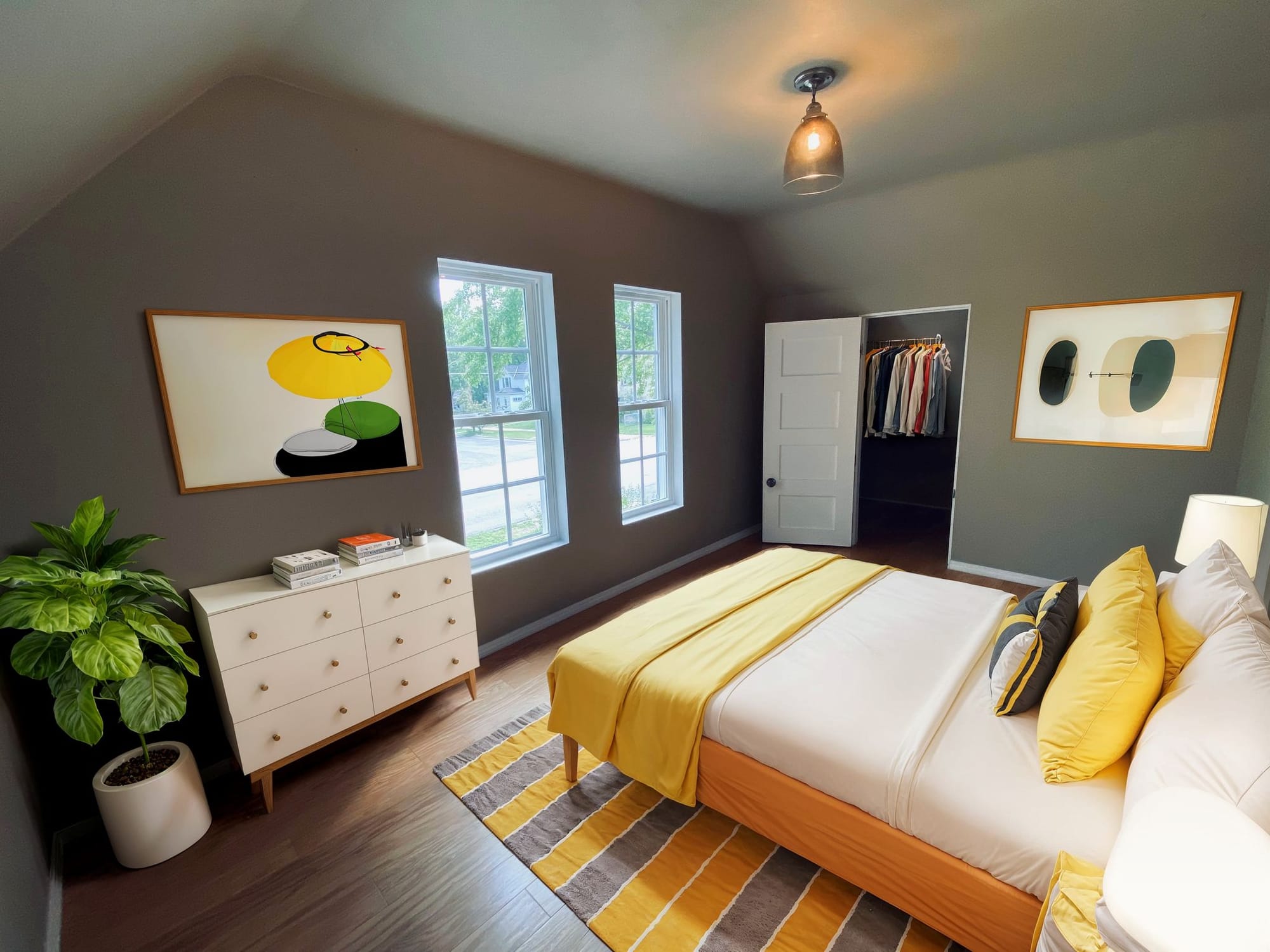
Then, I found a service on the website beycome.com, where for a flat fee (in my case, $99), your listing gets posted on MLS, a general website for real estate agents, and it automatically appears on platforms like Zillow, Realtor, Trulia, etc. I also handled all further communication by myself. So, this platform acted only as a listing agent, provided that I also posted the listing myself, meaning I answered all the questions and ensured that the listing was live on MLS. In my case, it was difficult but worth it because I saved $6,500 on this transaction.
A Fixer-Upper Project: Summary
Let’s sum it up! The most challenging part was learning all the aspects, starting with where to buy affordable building materials, how to make changes, how to do it in the most legal way, how not to hire contractors, and how to eventually sell the house, because I had never sold anything in the United States before. All these new steps were very difficult at first, but as you do them once, and then again, they become much easier, just like it happens with any other process.
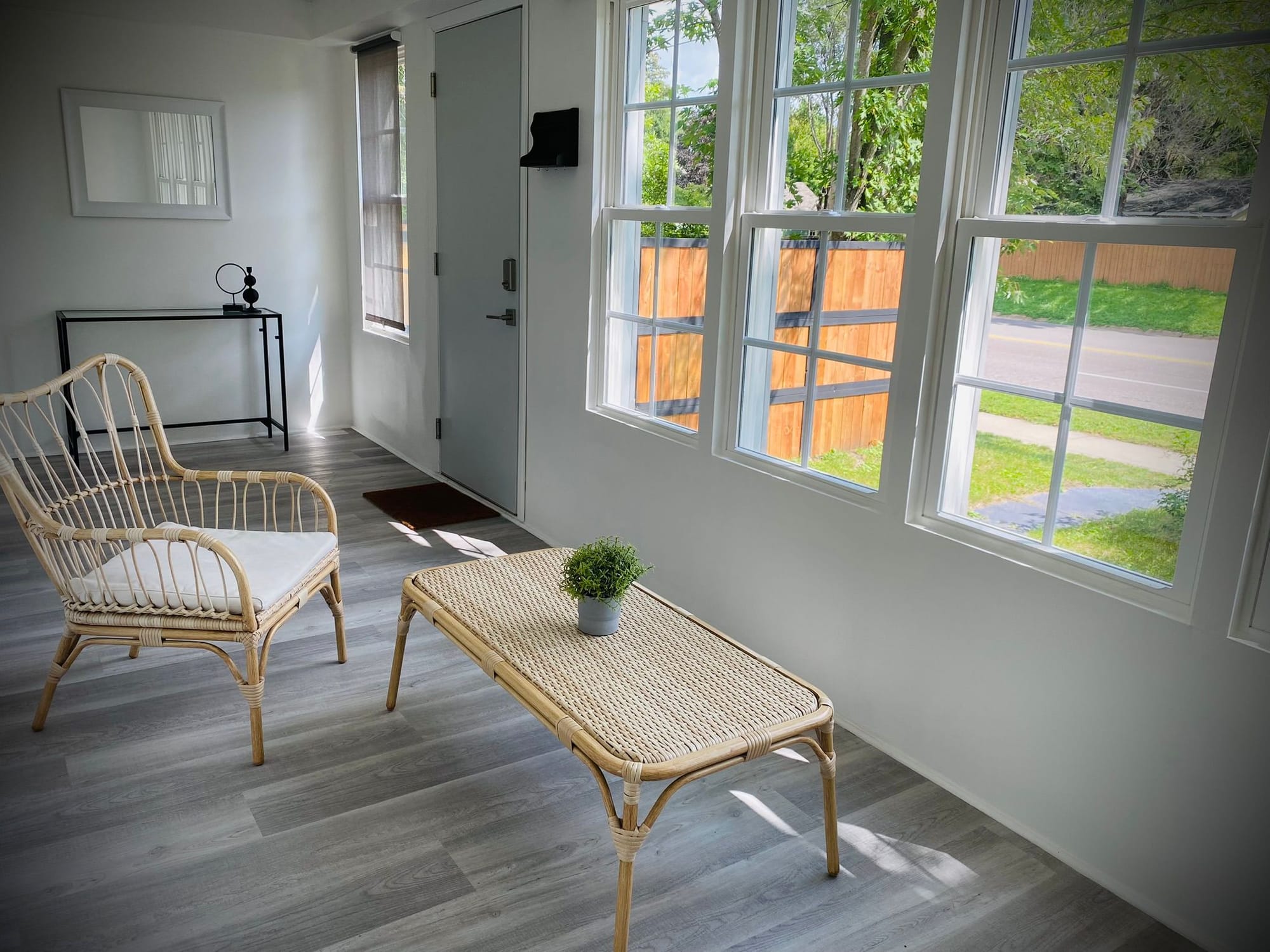
The most positive aspect was the opportunity to make money. At the same time, I’m learning a lot of information that might never come in handy, but perhaps it will, since I plan to buy my own quality home in a good neighborhood and renovate it myself. Homeowners in Minnesota have the right to perform certain actions and renovations in their own homes. But of course, for full legality, you need to obtain the permits everywhere.
What I really liked about this project is that it strengthened my relationship with my dad. We found a new milestone in our relationship. In general, it’s rewarding to see the results of your actions and, through this house, be able to bring happiness to some family, in a beautiful, new home that doesn’t require major renovations. I’m happy that a family will live there, raise their children, and leave memories for a lifetime. And I contributed to that.
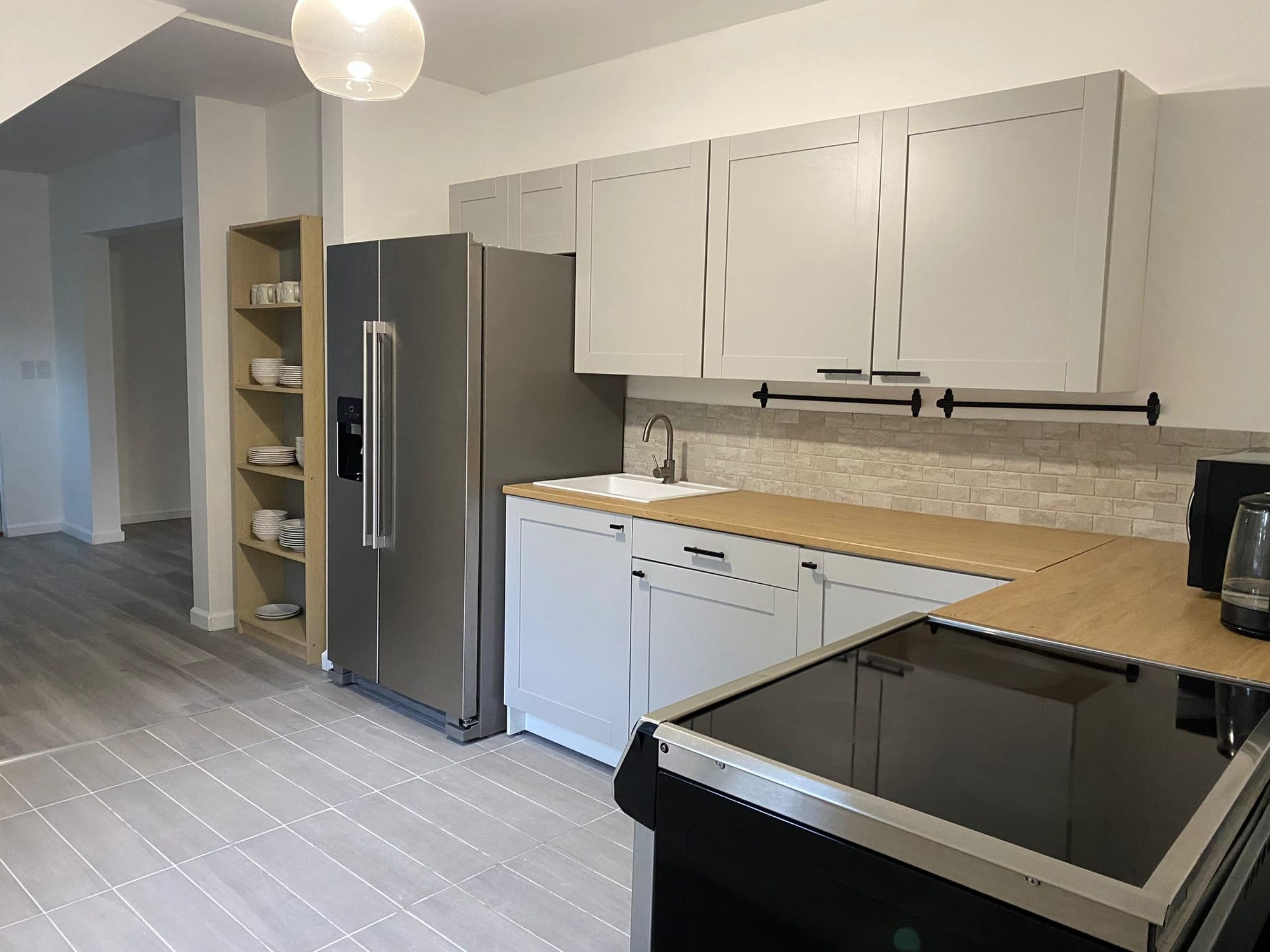
There are some common mistakes that you should try to avoid. The first mistake I made, which I realized only later, was that it’s very important to answer the question of why you’re buying this kind of house. Is it for yourself? For renting out later? Long-term or short-term? I mean, on Airbnb or for long-term rental? Because different approaches are required for renovating the house depending on the answer. Or maybe you’re buying it to renovate and immediately resell it. All of these approaches require different project management – and when I bought the house, I just wanted to buy something, keep the cash, and grow it. But I didn’t know for what purpose.
I’d advise to plan for enough cash, depending on the level of the house you want to buy, and at least as much for renovations, based on the price of the house. For example, if you buy a house for $52,000, you should have at least $52,000 to renovate the house, assuming that most of the work will be done by you personally. Of course, you need to have someone who can help you, like your husband, partner, dad, or a close person who can assist. And you should be very handy to do most of the work yourself in order to save on the project.
I hope this story helps anyone considering a similar journey. Wishing you good luck along the way!
